Come with me to the museum in Chengdu (4 days and 3 nights check-in tips for Chengdu Museum)
Go to Chengdu and take a walk
"In that rainy town, I never forgot you. The only person I can't take away is you." The song "Chengdu" became popular as well as Zhao Lei and Chengdu, attracting countless tourists to Chengdu. Perhaps they all look forward to letting go of the shackles around them and coming to the streets of Chengdu, stopping and stopping, and enjoying a comfortable and leisurely life. And I am a small one among countless people, full of longing for the "Land of Abundance", packed my bags, put on my camera, and embarked on this trip to Chengdu.

Regarding Chengdu, there are countless reasons for every visit, such as missing Chengdu's "delicious food" and "slowness" about Chengdu. A song "Chengdu" has become popular all over the country, making Chengdu appear in front of us more vividly. Of course, I am the same. I will go to a place because of a song and find her appearance, and I will accidentally find a different appearance. For example, this time, when I go to Chengdu and walk on the streets of Chengdu, I can't take away only you, but I can't take away your taste and those stories that I can't forget.

Chengdu, as a new first-tier city and a provincial capital city, also has its own artistic atmosphere. This comfortable and comfortable city has the cute and popular national treasure giant pandas, all kinds of hot hot pot, skewers, malatang, Chunxi Road, Kuanzhai Alley, Wuhou Temple, etc. have become famous tourist attractions. Everyone can find reasons to fall in love with this city. The reason why I fell in love with this city is its comfort!

The first day, walking in Chengdu
Du Fu caotang
I didn't hesitate to go for the first stop in Chengdu. The first thing that came to mind was to go to the most famous thatched house in China, the National First-Class Museum, a sacred place in the history of Chinese literature-Du Fu Cottage.


"In August, the high autumn wind roared and swept three thickets on my house. There are tens of thousands of buildings in peace, and all the poor people in the world are happy. If the wind and rain are calm, they will be like a mountain! Whoo-hoo! When did I suddenly see this house in front of me, and my house alone would be enough to die of cold!" This is the ancient masterpiece "The Song of the Cottage Broken by the Autumn Wind" left by Du Fu, the "Poetic Sage". We know that Du Fu cares about the common people and has a broad mind and lofty ideals for state affairs. But we rarely know whether the "thatched hut" in Du Fu's poem really exists? If it exists, where is this hut?



In 759 AD, Du Fu, the "Poetic Saint", moved to Chengdu with his family to escape the Anshi Rebellion. In the spring of 760 AD, with the help of friends, he built a thatched hut on the picturesque Huanhua River in the western suburbs of Chengdu. It took a year to build the thatched hut. The "Poetic Saint" finally had a place to live. This is the predecessor of Du Fu's Cottage. Today, Du Fu's Cottage has become a national first-class museum, different from the thatched hut that could be destroyed by strong winds. Although the "quality" of the thatched hut is different, it has become a sacred place in the history of Chinese literature.


The opportunity for Du Fu to write the ancient famous poem "The Song of the Cottage Broken by the Autumn Wind" can be seen from the title of the poem that it was caused by a strong wind in autumn. It was true that the thatched hut built by Du Fu in Chengdu was completed in spring, but it was not until August in early autumn. A strong wind destroyed the thatched hut, and then heavy rain followed, making the thatched hut shaky. The poet could not sleep through the night and was filled with emotion, so he wrote this This is a popular poem. The poem mentions several thatched that




Du Fu Cottage, located on the bank of Huanhua River outside the west gate of Chengdu City, is the former residence of Du Fu, the great poet of the Tang Dynasty, when he lived in Chengdu. In Du Fu Cottage, this place is no longer the same as the "August is high and the autumn wind is roaring, and the three thickets on my house" in the poem "The Sage of Poetry". Today, the Cottage covers an area of nearly 300 acres. It has been repaired and expanded in the Song, Yuan, and dynasties. It still retains the architectural pattern during the Hongzhi period of the Ming Dynasty and the Jiaqing period of the Qing Dynasty. The overall architectural style is simple and elegant, and the gardens are quiet and beautiful.



A total of about 1500 poems of Du Fu, the "Poetic Sage", have been preserved by later generations in his life. However, during his creative career, the "thatched hut" located on the bank of Huanhua River outside the West Gate of Chengdu City must have been the climax of his creation. Du Fu lived in the "thatched hut" on the bank of Huanhua River in Chengdu for nearly four years. During this period, he wrote more than 240 poems, which became the source of inspiration for his creation.




The original thatched thatched Although today's "thatched hut" along the Huanhua River is no longer the original appearance, it has become the largest, best-preserved, most well-known and most distinctive site of Du Fu's whereabouts in the country. It is a sacred place in the history of Chinese literature.


Although today's "thatched hut" has a new look, it still reproduces the pastoral style of the poet's former residence and creates a strong poetic atmosphere. The thatched hut is simple and elegant, has a grand scale, covering an area of more than 300 acres. The Cottage has three doors, of which the main gate and south gate are located in the south of the Cottage, and the north gate is located in the northwest. Among them, three landmark buildings located on the central axis, namely Daxie, Shishi Hall, and Gongbu Temple, have become the landmark buildings of the Cottage. To the east of the thatched hut is the Bonsai Garden. Go south along the flower path and gravel path, pass the Huanhua Temple, the flower path, Dayaya Hall, and finally the thatched hut showroom.


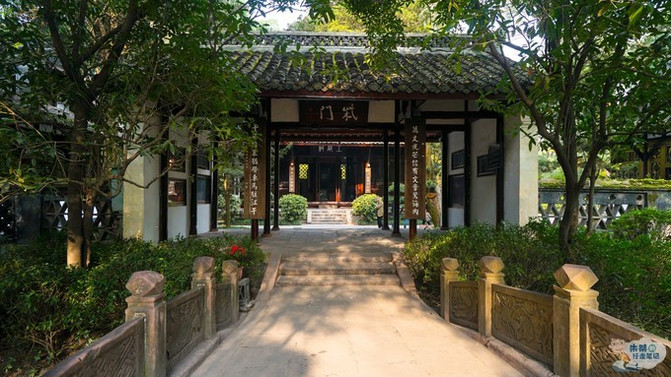
Between the official halls, the corridors turn thousands of times, which also explains the poet's bumpy career in his life. There is a path planted with flowers and trees on both sides in front of the temple on the east side. There is a water sill in the west. The back of the temple is dotted with pavilions, platforms, ponds and pavilions. It is leisurely and peaceful. It is a place to return to the garden, fields, and rest. In such an environment, the poet also wrote: "The flower path has never been swept by guests, but the tent door has now been opened for you." The park is not only full of pavilions, but also towering ancient trees.



Du Fu Cottage in Chengdu is famous all over the world for its poetry, and thanks to its poetry, it will be celebrated in future generations. This is the place with the richest and best preserved collection of Du Fu's creations. The Du Fu Caotang Museum contains more than 30,000 volumes of various materials and more than 2000 pieces of cultural relics. It also includes fine printed copies, photocopies, manuscripts, and modern printed copies of Du Fu's poems in the Song, Yuan, Ming and Qing dynasties, as well as foreign translations in 15 languages and more than 120 Chinese printed copies published in Korea and Japan. In addition, more than 100 pieces of Du Fu's calligraphy woodcuts are displayed in the "Du Fu's Poetry Calligraphy Woodcut Corridor". Du Fu Cottage has not only become a landmark attraction and famous landscape in Chengdu, but also the most famous thatched thatthat


After finishing the trip to Du Fu Cottage, it is almost noon. For your first meal in Chengdu, you must eat a restaurant that is very special and can eat the flavor of old Chengdu. When we mention Chengdu, we think of not only hot pot, but also a kind of delicious skewers similar to "hot pot". Although skewers are also a form of hot pot, skewers are even more popular than traditional hot pot in Chengdu. In recent years, Chuanchuan Xiang has gone out of Sichuan and become popular all over the country, and "Malatang" is also a variant of it. We can see it in all parts of the country, whether in streets, shopping squares, etc., especially next to schools, where several schools will open in succession.

Some time ago, there was a restaurant opened near my work unit, and there were long queues every day. I thought it was the same as the malatang I ate in other places, but when I went in, I found that the malatang in her house was a skewer type. This was also the first time I had eaten a skewer type malatang, which was so delicious that I couldn't stop it. I heard that there are stores in many places across the country, and each is more luxurious than the other, but the most authentic and most interesting ones are the old stores in Chengdu located on Zhimin Road. Therefore, I want to go to Chengdu even more and check in authentic ones.

There are many shops in Chengdu. The check-in place this time is on Zhimin Road. The style is very different from the shop in my city. However, the difference is that this shop is hidden in an old alley and does not want to open all over the country. Most of the shops are on busy streets. Even so, this shop is still crowded with people, and there are long queues at every meal time. The interior decoration of the store is retro in the 1980s and 1990s. Even the cups for drinking water and the baskets for holding vegetables are full of a sense of the times, and I feel like I have traveled through it in an instant.


There are many kinds of dishes in the store, which look fresh and hygienic. Taking food in the store is a bit similar to a buffet. You can get whatever you want to eat. There is a display cabinet for storing dishes in the store. Every dish is fresh and neatly arranged. We can see every dish at a glance. The first-class meat products are secretly cured, which is unique to this place. Fresh vegetables are fresh ingredients purchased on the same day. High-quality brands of soy products and fungi are strictly selected.

Choose the string you want to eat, and finally calculate the price based on the number of bamboo sticks in the string you choose. In the end, the price of each string is only a few cents, and the per capita price of a person is only tens of yuan. Not only can you eat enough, but you can also eat quite well.


There is no mandarin duck pot here. It's not a recommended spicy pot that cannot be eaten at all. The spicy pot is really authentic. It's delicious, spicy and delicious. The dishes are recommended for brain flowers and duck intestines, which are a must-have for hot pot! Other strings are very cheap, a few cents a string. You can take less at the beginning, try them all, and take them according to your own taste. Their dips are dry ingredients and soup base, which is also a major feature in the store. The more you eat, the more delicious it becomes. Call three or two friends together and eat hot, delicious and spicy skewers, making it comfortable! Bashi!
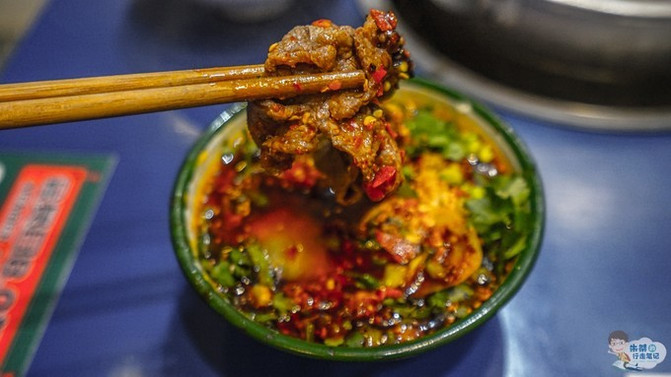
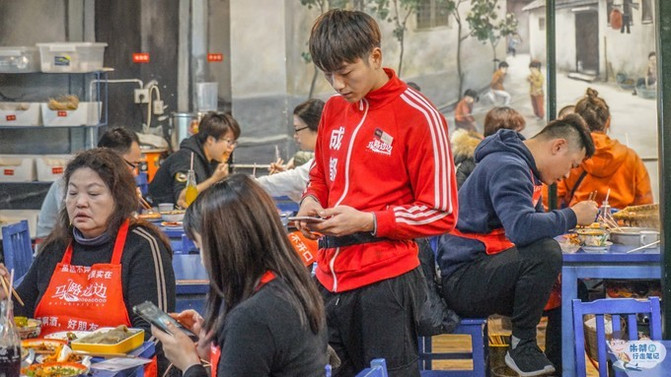
Jinsha site Museum
The most direct way for us to understand a city is to go to the city's museums and understand the history of the city through the historical relics, monuments and documents collected in the museum. Therefore, in every country on earth, there will be a national-level museum that will take you to a deeper understanding of the country. Every city in this country will also have a museum belonging to this city, which can have a more specific understanding of the city's development. In our country, many cities have not only one museum, but also many museums in categories, just to have a more specific and comprehensive understanding of the city.




China, which has a vast land and abundant resources, has too many histories of civilization. There will be different archaeological discoveries in different centuries. Among them, it is praised as China's first major archaeological discovery at the beginning of this century and is listed as one of Chengdu City's three major cultural brands. First, the Jinsha Site, which was selected as the "Top Ten Archaeological Discoveries in the Country in 2001", is not only a major discovery in the archaeological community, but also advances the history of Chengdu's city's founding from 2300 years ago to about 3000 years ago. It proves that the Chengdu Plain is the center of the origin of civilization in the upper reaches of the Yangtze River and an important part of Chinese civilization, and provides important evidence for the establishment of the "diversity and integration" theory of the origin of Chinese civilization.



It would be an exaggeration to say that the Jinsha Site Museum is the "youngest" site museum in Chengdu. It has been buried deep underground for thousands of years, but it was not until February 2001 that it was discovered in urban Chengdu and allowed to see the light again. The Jinsha Site is a major discovery in the archaeological community. It is the first major archaeological discovery in China since entering the 21st century. It is also another major archaeological discovery in Sichuan after Sanxingdui, and was selected as the "Top Ten Archaeological Discoveries in the Country in 2001". With the continuous excavation of archaeologists, its mystery has been revealed one by one. It was the capital of the Ancient Shu Kingdom, the center of ancient civilization in the upper reaches of the Yangtze River from the 12th century BC to the 7th century BC. It was about 3200 years ago. -In 2600 years, the history of Chengdu City's founding was advanced from 2300 years ago to about 3000 years ago.




The Jinsha Site is a major archaeological discovery in the 21st century. Its emergence shocked the world. Through a series of archaeological discoveries, it can now be confirmed that the Jinsha site is a site of the Shang and Zhou dynasties, which unearthed the most dense ivory and the most abundant gold and jade objects in the same period in the world. Important relics discovered at the Jinsha site include large-scale building sites, sacrificial areas, general residential sites, large cemeteries, etc., unearthed precious cultural relics such as gold, bronze, jade, stone tools, ivory, lacquer ware, etc., as well as tens of thousands of pottery pieces, tons of ivory and thousands of wild boar tusks and antlers. It can be said to be the site with the most abundant gold and jade ware unearthed and the most dense ivory in the world. It is also the longest-lasting and most complete preservation in my country. Sacrificial relics, The most abundant relics are the sacrificial relics of ancient times.




After the discovery of the Sanxingdui Civilization, we used Sanxingdui to learn more about the ancient civilization in the upper reaches of the Yangtze River. However, after the Sanxingdui Civilization, there was a long period of emptiness in history until the Jinsha site from the late Shang Dynasty to the Western Zhou Dynasty was discovered, revealing another political, economic and cultural center that rose in the Chengdu Plain after the decline of the Sanxingdui Civilization-the capital of the Ancient Shu Kingdom. It is also one of the most important sites in the pre-Qin period in China.




In order to better protect the Jinsha Site and allow more people to understand ancient civilization, a site-type museum built to protect, study and display Jinsha Culture and Ancient Shu Civilization-Jinsha Site Museum has risen from the ground in the original site. It covers an area of 300,000 square meters and has a total construction area of 38000 square meters. It consists of two main buildings: a relic museum and an exhibition hall located on the north and south sides of the Dasha River respectively.
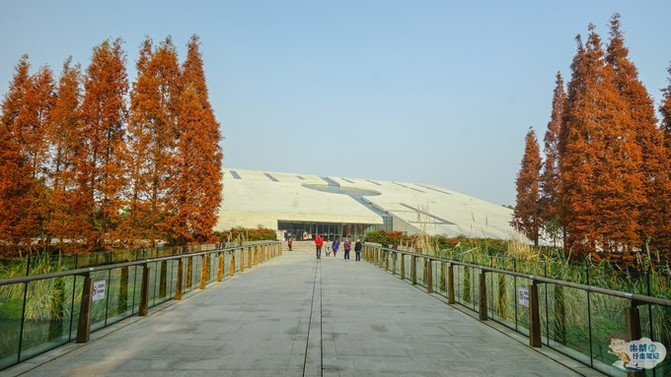

The exhibition hall of square buildings and the relic hall of round buildings, one round and the other, combine strength and softness and complement each other, and they are like important landmark buildings in Chengdu City. The Heritage Museum is located in the east of the museum and south of the Dama River. It is a sloping semicircular all-steel-frame building with a construction area of 7588 square meters. The Ruins Museum is the excavation site of the large-scale sacrificial activity site at the Jinsha Site. The museum mainly focuses on the original ecological protection and display of the excavation site. It preserves the original excavation to the greatest extent. It is also the most complete preservation, longest lasting, and the most abundant sacrificial relics in China.



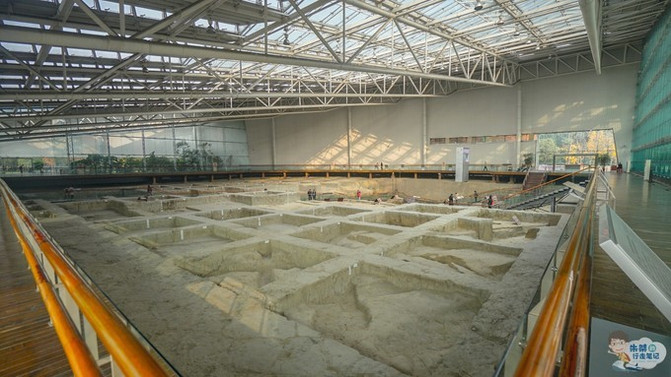
The exhibition hall is located on the bank of the northern bank of the Yellow River. It is a square-shaped all-steel-frame building with a construction area of 16000 square meters. It consists of five themed exhibition halls, including "Ancient Home","Kingdom Silhouette","Endless Heaven and Earth","Thousands of Years of Relics", and "Interpretation of Jinsha". The museum displays a total of 2235 cultural relics unearthed from the Jinsha Site, including gold, bronze, jade, stone tools, lacquer wood, pottery, ivory, etc. Among them, there are 366 national first-class cultural relics, 374 national second-class cultural relics and 1429 third-class cultural relics. Through these displayed cultural relics, modern scientific and technological means are used to vividly and concretely restore the ancient Shu Jinsha civilization and comprehensively display the brilliance and brilliance of the ancient Shu Jinsha.




Among the many cultural relics unearthed at the Jinsha Site, the most famous one is the "Sun God Bird" gold foil located in the fourth exhibition hall of the Jinsha Site Museum. It is not only the main pattern of Chengdu's urban image, but also identified as a symbol of Chinese cultural heritage. In 2014, it ranked among the top ten in the "Most Popular Museums in China" poll by global tourists. In the same year, among the "Aerytis", known as the World Tourism Academy Awards, the Jinsha Site Museum won the Best Site Museum Award. The Jinsha Ruins Museum has been known to more and more people since its inception. It is showing the brilliance and glory of the ancient Shu Jinsha to the world.



After coming out of the Jinsha Ruins Museum, the sky was already dark and my stomach was beginning to growl. Tonight, I went to eat a different flavor of Chengdu. I went to the most "alternative" rotisserie in Chengdu. The barbecue method was like roast duck, without smoke and sparks. Splastered-Deji braised kebabs. When it comes to Chengdu's food, everyone always thinks of hot pot and skewers. Especially the friends who come to check in from other places often ignore some other types of delicacies. For example, when I come to Chengdu, I always eat various skewers and hot pots. Fortunately, I have local friends in Chengdu who took me to experience some different types of very delicious food, which is one of the different types of very delicious food.

I went with my friends to the Deji braised kebabs on Jianshe Road. I thought it was just a pile of meat put in a pot and braised in one bite, but I thought it would not be very delicious. As a result, I smelled a faint burnt aroma as soon as I entered the store. The aroma of meat was fragrant. When I arrived in the store, I realized that I had thought too much. The facilities in the store were 10,000 times better than I imagined. It was a very creative barbecue, and the waiters were very enthusiastic. No wonder I was in Chengdu, a place where delicious food is gathered.
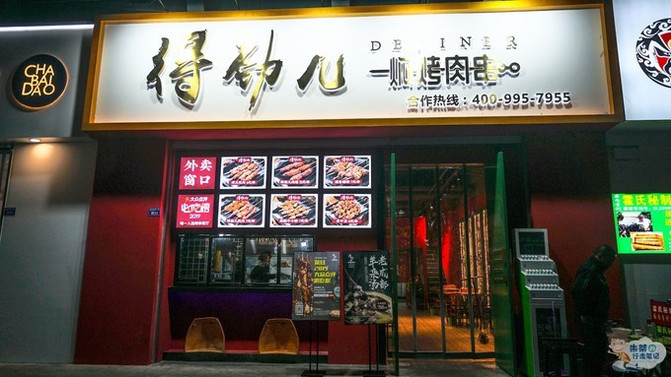

The barbecue we had in the impression was a big oven with fierce charcoal fire. The master skillfully flipped the skewers in his hand, but there was smoke and sparks everywhere. But the place we came to was completely different from the barbecue I remembered. I even thought I had gone to the wrong shop. This was not a barbecue shop. There was no smoke and sparks flying. I was like an actor on the wrong set. Surprised. The decoration style of the store is based on red and is full of modernity. Every detail is handled just right. The valuable handpieces collected by the boss are also displayed one by one. For collectors, they really want to take these limited edition handpieces home one by one.
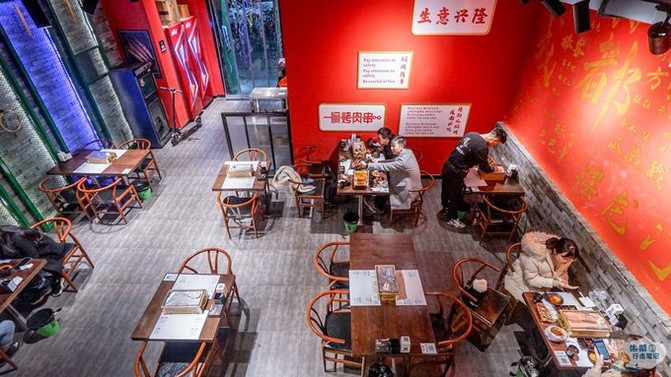
Well, we still need to understand how the kebabs here are roasted. When I entered the store, I saw a braising room, which was where all the mysteries were. There is no oven with smoke billowing and sparks flying here, and there is a big round tube, which is very similar to the roasting barrel of Peking duck we saw. This is the "oven" for braised pot kebabs. This is also the first time I have seen such a creative barbecue. The barbecue method is the same as the Peking Duck. There is an oven like a large drum on site, and the skewers are hung inside. It is just like the method of hanging the roast duck in the oven when roasting ducks. The food is roasted and the heat is controlled just right., especially the mutton kebabs, the meat is very tender and delicious.

There are many signature kebabs, and each kebabs is well shared. On the recommendation of a friend, I ordered lamb chops and prawns, bullfrogs, and other kebabs. Before the skewers are served, the clerk brings the prepared sauces to the table. There are sauces made secretly in the store and dry dishes with Chengdu characteristics, which can be adjusted according to your own taste.


After the kebabs were served, not only was the barbecue method different from anything I had seen before, but the kebabs roasted in the simmering pot did not feel greasy, and the meat was tender and tender. We ordered lamb chops, a very ceremonial kebabs. We didn't have to deboned ourselves. We could enjoy the deboning service of lamb chops specially provided in the store. There were also grilled prawns, and a clerk would also help us peel the shrimps. It was also quite Intimate service.

The next day, walking in Chengdu
Sichuan Province Museum
Every time I go to a place, I will include visiting museums in my itinerary, because it will help me understand the local history and humanities. Bashu culture has a long history. When traveling to Chengdu, whether it is a provincial museum or a city museum, it is a must-visit place. Today I came to the Sichuan Province Museum, or Sichuan Museum.




Sichuan Museum was founded in 1941 and was then called Sichuan Museum. At the end of 1950, it was renamed Western Sichuan Museum. In 1952, it was named Sichuan Province Museum. In 2009, with the completion of the new museum, it was officially renamed Sichuan Museum. Sichuan Museum is located in Huanhuaxi Historical and Cultural Scenic Area in Chengdu City. It is the largest comprehensive museum in Southwest China and a national first-class museum. The institute collects more than 260,000 cultural relics, including more than 50,000 precious cultural relics. The museum currently has 14 exhibition halls, including calligraphy and painting, ceramics, bronzes, ethnic cultural relics, arts and crafts, Tibetan Buddhism, Wanfo Temple stone carvings, Zhang Daqian's calligraphy and paintings, Han Dynasty pottery art and 4 temporary exhibition halls used to hold various temporary exhibitions, comprehensively reflect the glorious history of Sichuan Bashu culture, produce endless exquisite exhibits, and have strong regional cultural characteristics. This makes it occupy an important position among public museums across the country.


Although it is approaching the winter solstice, Chengdu does not seem to be cold at all. The nearby Huanhuaxi Park and Du Fu Cottage are full of people and the greenery are still there, without the bleakness and coldness of cold winter. Ginkgo leaves are colorful and golden everywhere on both sides of the entrance of the Sichuan Museum, attracting many tourists to take photos here. Walking up the steps and entering the museum, what comes into view is a circular hall. The main exhibition area of the building has three floors, and the gate when we enter is on the second floor of the museum, which is divided into Bashu Bronze Museum, Ceramic Art Museum, Painting and Calligraphy Museum and Zhang Daqian Art Museum.



Among them, the Bashu Bronze Museum collects a large number of exquisite bronzes unearthed from a series of major archaeological discoveries in various parts of Sichuan since the 1950s. Whether it is inscriptions, symbols, or patterns, these bronzes are all very Bashu characteristics, and their superb technology and beautiful craftsmanship are even more amazing. As soon as the Ceramic Art Museum entered the exhibition hall, she saw the words "Art of Mud and Fire" written on the walls covered with pottery and porcelain. The natural and simple charm of Bashu ceramics was vividly expressed in each exquisite ceramic exhibit. The calligraphy and painting museum displays many famous works, which can be said to be a concentrated expression of the profound tradition of Sichuan calligraphy and painting art.


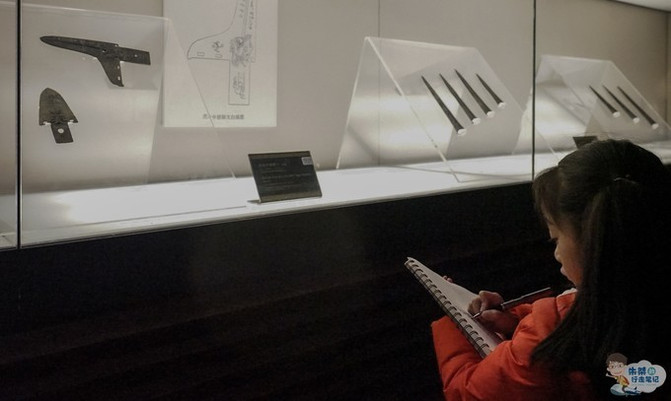
The most noteworthy one is the Zhang Daqian Art Museum. The Sichuan Museum has a rich collection of Mr. Zhang Daqian's paintings, especially the copying of Dunhuang murals. Mr. Zhang Daqian has copied more than 200 Dunhuang murals, and the Sichuan Museum has collected 183 paintings. Mr. Zhang Daqian is internationally renowned for his beautiful and handsome pen and indulging in the charm of splashing color. He is praised by the Western art community as the "Oriental Pen". His talent, courage and experience are unmatched by ordinary people, as Mr. Xu Beihong praised: "Zhang Daqian is the first person in 500 years!" Looking at the clear brushwork in front of you, each piece of gold and jade, each scene of the past takes you into an extraordinary world. After lamenting the charming world, I came to the third floor of the museum.
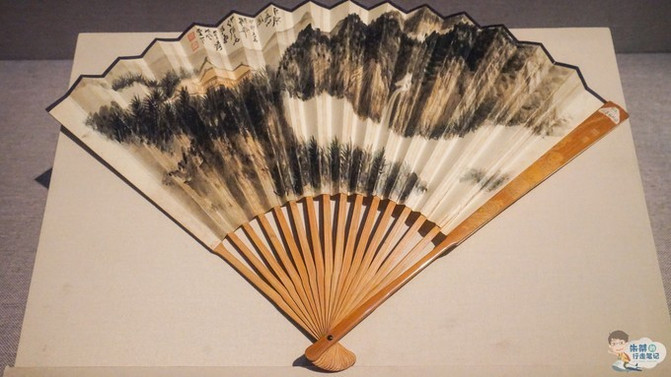




The third floor is the Tibetan Buddhist Cultural Relics Museum, the Wanfo Temple Stone Carving Museum, the Sichuan Ethnic Cultural Relics Museum, and the Arts and Crafts Museum. Sichuan is China's second largest Tibetan area, so the Sichuan Museum has a rich collection of Tibetan Buddhist cultural relics. These cultural relics comprehensively reflect the spread and development of Buddhist culture in Tibetan areas for more than a thousand years. The Wanfo Temple Stone Carving Museum collects more than 200 stone carvings unearthed from the Wanfo Temple site, which occupies an important position among stone carvings in Sichuan and even the country. The Sichuan National Cultural Relics Museum collects more than 7,000 pieces of ethnic cultural relics, and the fourteen ethnic minority artifacts on display show colorful folk customs. The exquisite objects displayed in the Arts and Crafts Museum, with unique shapes, gorgeous colors and gorgeous carvings, have become artistic treasures and an important part of the traditional culture of the Chinese nation.
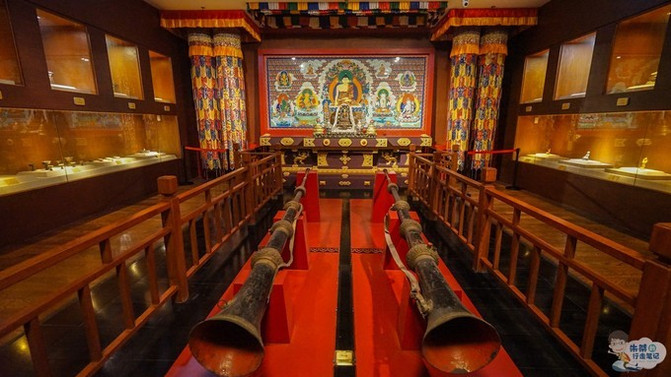



After visiting the exhibition hall on the third floor, take the elevator to the first floor. On the first floor, in addition to the Sichuan Han Dynasty pottery art exhibition, there is also the exhibition "Painted Mediterranean: Civilization and Fantasy of an Ancient City" jointly sponsored by the Sichuan Museum and the Paestum Archaeological Site Park in Italy. This "Belt and Road" exhibition season displays 134 precious cultural relics from the ancient Mediterranean city of Paestum, grandly recreating the history of cultural exchanges, migration and social and political changes in the Mediterranean region from the 6th century BC to the 3rd century AD. Sichuan Museum selected 13 precious cultural relics from the Warring States Period that reflect the life styles of the ancient Bashu ancestors were also unveiled. This innovative move has carried out useful exploration in order to enhance cultural understanding among countries along the "Belt and Road" and deepen the audience's understanding of different civilizations in the East and the West.






The browsing time of the Sichuan Province Museum does not take too long. Basically, the visit can be completed in more than two hours. It was almost noon when we ended up, and we chose Sichuan cuisine for lunch. This way we were worthy of the time we came to Chengdu for a walk. After coming to Chengdu once, I have always been obsessed with Chengdu's food. Thinking of the delicious and spicy hot pot and skewers makes me drool. Some time ago, I accidentally saw a restaurant called "New School Sichuan cuisine" and rushed to Chengdu during the break time. This time, when I came to Chengdu, what I wanted to do most was to eat all Chengdu cuisine. Chengdu, known as the "Gourmet Kingdom" and "Food Paradise", seems to have more and more tourists rushing to "eat" in recent years.

When I came to Chengdu, a "food paradise", the first thing I did was to find the flavor of this city that I wanted to eat most. Among the dazzling array of delicacies, how to find a restaurant that satisfies you and is "satisfied" with the city is really not easy. Among many restaurants, I finally decided to check in to the legendary Internet celebrity store Chengdu, with the recommendation of friends and netizens, hoping to find the "Chengdu flavor" that I wanted to eat most.


The Chengdu food store on Zhimin Road is not too big, but the signboard is very conspicuous and easy to find by following the navigation. I thought the price of the Internet celebrity restaurant would be very high, but it was cheaper and more affordable than I thought. We came at noon and lined up for about half an hour. Fortunately, we didn't choose the weekend or dinner. Otherwise, the queuing would be a tough "battle", so sometimes queuing requires a little strategy.


The decoration style of the restaurant is simple. For a foreign tourist like me, it is quite content to taste the authentic Sichuan flavor in such an environment, and the price is quite close to the people, which makes me really satisfied. Because I came from other places, I didn't know what was delicious and what wasn't delicious, so I ordered a few signs in the store. Fortunately, I didn't step on thunder.

Streaking tuotuo shrimp should be a big signature dish in the store. You don't have to peel the shrimp yourself. You don't have to do anything with the shrimp shells and shrimp lines removed. You don't have to do anything. You will be done after eating it. You will also burst out in one bite, which is full of satisfaction. This dish may seem simple, but it is not a simple dish. The waiter brings the pickled shrimp and the seasoning prepared by the chef to the table, and pours the boiling oil in front of us. This is the final process of cooking. Let us taste a special dish in a visible way.


Special grilled fish slices are also a signature dish in the store. If I hadn't tasted it myself, I would really think that I ordered kebabs or something. We all know that fish meat is quite soft and easy to break, so we rarely choose to string fresh fish meat when handling it. This is quite troublesome. However, this special dish is to fork the fish meat with a stick. There are about twenty slices in a plate. It is also a blessing for lazy people. You don't have to pick your own fish bones. The fish is tender and delicious. It is filled with soup and melts in your mouth. The taste is slightly spicy. It tastes like one word, great!


Finally, I would like to talk about the most ceremonial dish-rose and garlic lotus root box. We can eat lotus root boxes in many places, but the lotus root boxes we eat here are definitely the most ceremonial dish I have ever eaten. A fresh rose was put into a thermos bottle filled with a special liquid by the waiter. After it was taken out, a little friend among us, under his command, joined hands together, and a rose became rose petals and sprinkled on the lotus root box. It's a quite romantic picture.


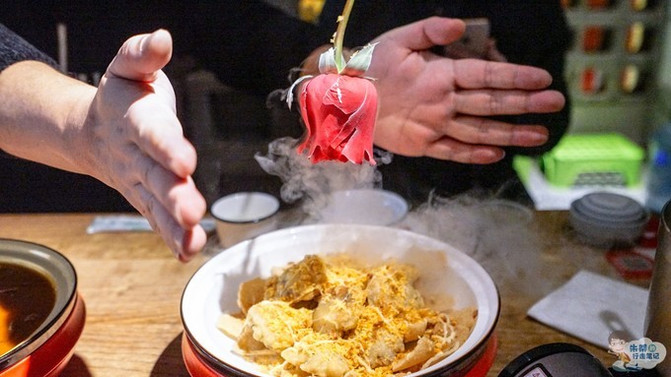
Qingyang Palace
"When I walked in the west of Ma Jincheng City, I was drunk by plum blossoms. Twenty miles from Qingyang Palace to Huanhua River, the fragrance continues." The most obvious thing for me during this trip to Chengdu is that the scenic spots in Chengdu are relatively concentrated, which makes it very convenient for me to play. After admiring these attractions, walk straight along Qingyang Street to reach Qingyang Palace.


When we approach Qingyang Palace, the first thing that comes to our eyes is the solemn and magnificent mountain gate. A horizontal plaque with three golden characters "Qingyang Palace" hangs high above the mountain gate. According to historical records, this plaque was written by An Hongde, the county magistrate of Huayang, Chengdu during the Qianlong period of the Qing Dynasty. The four characters "Tao Tao, Nature" on the wall at the exit next to it give people the feeling that "Tao Tao is nameless, but the beginning of heaven and earth".


Qingyang Palace, formerly known as Qingyang Si, is located in the second west section of the First Ring Road in Chengdu City, Sichuan Province. It was built in the Zhou Dynasty. During the Tang Dynasty, Xizong built a grand palace for it, changing "Guan" to "Gong", making it the largest and most influential palace in Sichuan at the end of the Tang Dynasty. However, by the Ming Dynasty, the temples built in the Tang Dynasty were unfortunately destroyed by natural disasters and soldiers, causing heavy damage. Most of the existing buildings we see today were rebuilt and restored during the six to ten years of Kangxi in the Qing Dynasty.


Qingyang Palace covers an area of about 120,000 square meters. It is known as the "No. 1 Taoist Temple in Western Sichuan" and the "No. 1 Jungle in Southwest China". It is also one of the famous Taoist palaces in the country. The palace buildings are neat and compact in layout, elegant and elegant in shape. The main buildings are divided into six floors, all built on a central axis. The main buildings include Shanmen, Hunyuan Hall, Bagua Pavilion, Sanqing Hall, Doumu Hall, Zijin Terrace, Shengsheng Terrace and Shuan Terrace.


The first temple in Qingyang Palace is the Lingzu Hall, which is now integrated with the mountain gate, also known as the Lingzu Tower. Hunyuan Hall is the second hall of Qingyang Palace. It was rebuilt during the Guangxu period and covers an area of 616 square meters. It has 26 stone pillars and two wooden pillars. The pillars are hollow and carved with deer, phoenix moon, double lions playing ball and other patterns, the image is vivid and flexible. In the middle of the hall, the "Ancestral Master of the Origin" is enshrined, and in the back hall, the "Immortal Cihang" is enshrined. Buddhism calls it the "Great Master of Guanyin".
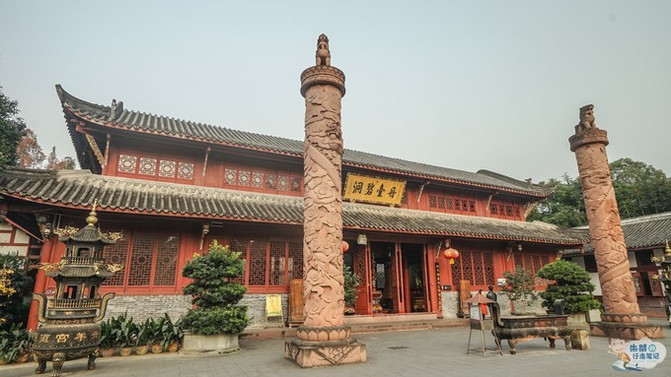

The Bagua Pavilion is the most complete and luxurious building. It is located between Sanqing Hall and Hunyuan Hall. The stone foundation of the pavilion is divided into three layers, which are square, octagonal and circular in order to match the Taoist sky and earth, Yin and Yang interact with each other, and the Eight Trigrams match the righteousness. The pavilion enshrines a statue of Lao Tzu riding a green ox.


Sanqing Hall, also known as the Wuji Hall, is the main hall of Qingyang Palace. In front of the hall, there are two bronze cast sheep. They are the treasures of the Qingyang Palace. On the left side is a single-horned sheep and on the right side is a double-horned sheep. It is said that these two copper sheep are divine sheep that drive away disasters and avoid evil. As long as they are stroked, they can cure diseases and save disasters. Now, it has become a custom in Chengdu to come to Qingyang Palace to "touch copper sheep". The Sanqing Hall is dedicated to the highest gods of Taoism, Sanqing, namely, Yuqing Yuanshi Tianzhu, Shangqing Lingbao Tianzhu, Taiqing Detian Zun, also known as Taishang Laojun and Taishang Daozu.


After Sanqing Hall is the only existing original Ming Dynasty building in Qingyang Palace-Doumu Hall, also known as Yuanchen Hall, is an all-wood building. The last group of important buildings is the "Tang King Hall", also known as the Three Terrace of Houyuan. On the left is the "Shengsheng Terrace", on the right is the "Shuan Terrace", and in the middle is the Zijin Terrace. In the hall are dedicated to Li Yuan and his wife and Li Shimin's statue. The most precious cultural relic in Qingyang Palace is the "Taoist Collection", which is the most completely preserved version in the world and has become a precious material for studying Taoism.

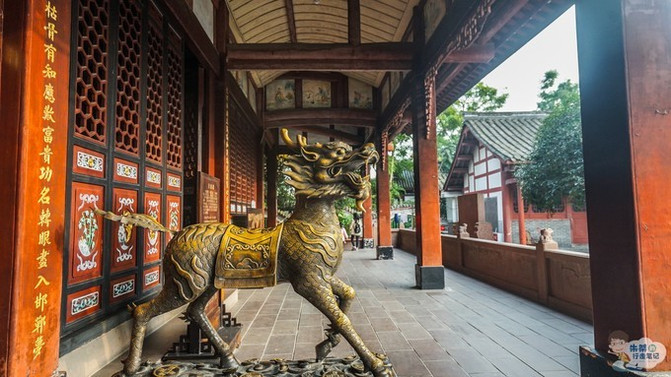
Qingyang Palace is not very big, but it still takes a long time to experience its historical and cultural heritage in detail. After coming out of Qingyang Palace, the sky is getting dark. Chengdu, which is already winter, is still quite cold. Let's go for hot pot tonight! But I have eaten simple Chengdu hot pot many times, and it doesn't seem to attract me. My friend reminded me that I can go to a hot pot restaurant that is the best at making fish in Chengdu. The fish is placed on 300-degree pebbles, and it also has a beautiful meaning-fish husband, fish baby, pebble fish hot pot.


What is the experience of boiling fish on pebbles at 300 degrees? Before I came to Chengdu, I never thought about it. I didn't expect that there was really such a way to eat. Chengdu is worthy of being a "food paradise". In a restaurant called Yufuyu Zai Cobblestone Fish Hot Pot Restaurant on Zhimin Road, I actually saw fish placed on 300-degree pebbles. I like to eat fish and an experience that must not be missed. This has also been rated as Chengdu's best fish-making hot pot restaurant from all over the country.


On the road to Zhimin, the facade gives people a retro feeling. After entering, the wooden dining table, bamboo chairs and wooden benches in the store all give people the feeling of returning to their childhood. There are also fishing nets, coir coats and bamboo hats in the store are used to decorate, looking like a real fisherman's home. It is also the careful consideration of the decoration that shows that the store is unambiguous in treating fish. The reason for insisting on lively and lively fish is to allow every diner to taste the store's intentions.


If you choose to eat, it is recommended to arrange the number in advance. Holidays will definitely wait for a long time. The store tastes good, the atmosphere is good, and there are really many people! This time, we rushed there before meal time. Fortunately, we didn't have to queue up. When we came out after eating, there was a long line at the door, which was quite popular.
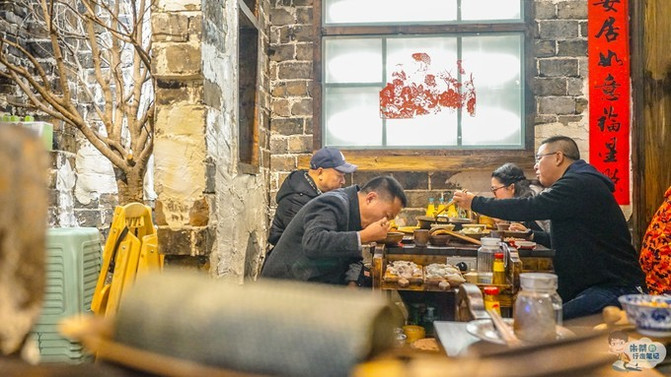
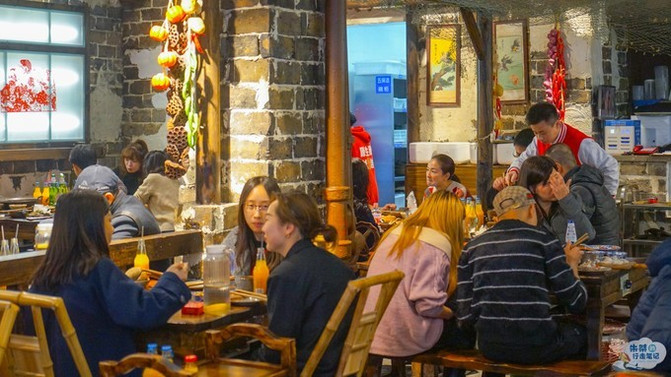
In fact, for diners, everyone has their own taste, so don't worry too much when choosing the bottom of the pot. There are three types of pot bottoms here: classic red pot, which is moderately spicy and suitable for diners from other places or ones with lighter flavors; ancient pickled cabbage pot, diners who choose this pot bottom must be cautious. Unlike the pickled cabbage fish we have eaten in the past, the pickled cabbage pot here is the hottest and suitable for diners who can eat spicy food; the fish soup in the lemon and ginger pot can be drunk directly. It tastes pure, sweet and sour, and has no spicy taste. This time we chose the classic red pot, which was moderately spicy and just right.


Two friends and I ordered Jiangtuan Fish. The fish is killed immediately and is very fresh. Jiangtuan has no thorns and tastes very delicious. There are many other species of fish in the store that are killed immediately and according to your own taste. Just order it. In addition to river fish, there are thorny red sand, naked spots, etc., and choose the fish you like to eat according to your preferences. What the store can ensure is that all fish are killed live fish, rather than just making up for the number, which ensures the tender meat of the fish and the gourmet experience of the diners.


Before serving the fish, a waiter will come over and shout for the stone to run, and then you will hear the sizzling sound of the fish meat touching the 300-degree pebbles. At this time, the aroma of fish meat without any seasoning will wade. Then you will pour the fragrant soup base into the pot, cover it, simmer it for a few minutes, and start eating! This is the most fish-eating hot pot restaurant I have ever eaten. Putting the fish on 300-degree hot pebbles not only heats the fish, but also retains the freshest taste of the fish and makes it more delicious.



After the fish in the pot is finished, this is the official time for the hot pot to start. Put the selected dishes into the pot and rinse the vegetables in the same way as eating hot pot. There is no residual fishy smell at the bottom of the pot, but a strong fishy aroma. This way of eating fish is really good at eating.


The third day, walking in Chengdu
Chengdu Museum
When traveling in a city, the most intuitive way to get a quick and comprehensive understanding of the city's history is to visit a local museum, because museums are places to collect, collect, display and study objects representing natural and human cultural heritage. When traveling to Chengdu, the first thing is to taste all kinds of delicacies in the world's gourmet capital. Eating and drinking every day is naturally indispensable; secondly, the most important aspect that best reflects my knowledge and cultivation is to carefully appreciate Chengdu. The profound historical and cultural heritage of a national historical and cultural city. So which museum should I choose if I can not only taste the charm of Chengdu, the cultural capital, but also taste delicious food with a short walk? The Chengdu Museum, located in a prime location in the center of Chengdu City, is the best place to go.


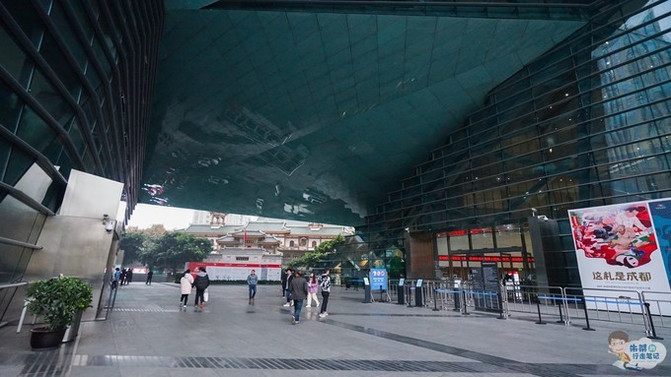
Chengdu Museum is located on the west side of Tianfu Square in the center of Chengdu City, adjacent to Sichuan Province Library, Sichuan Art Museum, and Sichuan Science and Technology Museum. It covers an area of about 17 acres and has a total construction area of 65000 square meters. It is the largest comprehensive museum in Chengdu City. We all know that the terrain of Chengdu developed radiating outwards with Tianfu Square as the center, as can be seen from the subway built. As the most central square in Chengdu, its prosperity is beyond words. The fact that the Chengdu Museum can be built in a prime location in the center of the city shows the city's importance to culture. It also shows that the Chengdu Museum is a landmark building connecting Chengdu's past and future and has extremely important cultural value.



Take the subway to Tianfu Square Station and follow the elevator to the ground square. The black building on the west side is the Chengdu Museum. Walking up the steps, you can see that the main building of the museum is divided into two parts: north and south. The south building is mainly an administrative area on the ground (for tourists to store luggage, etc.), and the underground is an academic report hall (multi-purpose hall); the north building is mainly an exhibition area. The first floor is the hall, projection hall, and No. 1 pro-exhibition hall. Because I went late, I didn't see the special exhibition "Entering the Zhonghua Palace" displayed in No. 1 pro-exhibition hall.



On the first floor of the basement, there are exhibition halls No. 2 and 3, which display Man and Nature: Beilin Donation Exhibition. The "Man and Nature" exhibition is the first natural-themed exhibition since the establishment of the Chengdu Museum. The exhibition hall displays more than 300 animal specimens, which not only shows the audience the diversity of species on different continents, but also explains the relationship between man and nature.


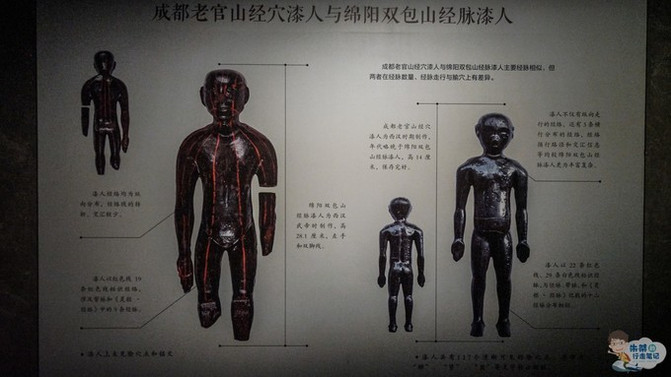
The second and third floors are the ancient chapters of Huazhong Jinguan City-Chengdu History and Culture Exhibition. On the second floor, the history of Chengdu from the pre-Qin to the Southern and Northern Dynasties is displayed. The Pre-Qin Hall is the first part of the entire general history display. Through more than 240 pieces of fine cultural relics, it embodies the grandeur and magic of the ancient Shu civilization during the Pre-Qin period. During the Qin and Han Dynasties, Chengdu, as the county government of Shu, was the political, economic and cultural center of Southwest China. It was known as "Tianfu" in the world. During the Jin and Southern Dynasties, Chengdu was the starting point of the Silk Road "Henan Road" and played an important role in economic and cultural exchanges between Asia and Europe.



The third floor displays Chengdu's history from the Sui, Tang and Qing Dynasties. Chengdu, as a southwest metropolis, was unprecedentedly prosperous during the Sui, Tang, Five Dynasties, Song and Yuan Dynasties. During the Ming and Qing Dynasties, Chengdu was both the capital of Sichuan and the support point of the central government in the southwest. At this time, Chengdu was a veritable land of abundance. Through various exquisite objects on display, as well as scene restoration, sand table models, multimedia and other exhibition forms, the exhibition hall vividly introduces to tourists the living scenes of the ancient Shu people and the prosperity of the Land of Abundance.





The exhibition hall on the left side of the fourth floor displays the modern chapter of Huazhong Jinguan City-Chengdu Historical and Cultural Exhibition, and the folk custom chapter on the right side. The Modern World chapter tells the story of the unprecedented social changes after the mid-19th century. Chengdu, as an important source of the road protection movement, a strategic important town in the rear area of the Anti-Japanese War, and the main battlefield for liberating the Southwest, played an irreplaceable role. The folk customs chapter displays Chengdu's unique humanistic temperament and spiritual outlook, ranging from delicious food and tea to people's livelihood. The generosity and calmness of Chengdu people have been reflected and passed down.



The fifth floor is the China Shadow Puppet Museum, and the "Shadow Dance Vientiane-Chinese Skin Shadow Exhibition" is located in the south exhibition hall. Chinese shadow puppet is a form of folk drama with a long history and cultural connotation, and is an important representative of human oral and intangible cultural heritage. "Thousands of Puppet Show-Chinese Puppet Show" is located on the north side of the exhibition hall. The exhibition hall contains more than 200 puppet exhibits, telling the development and evolution of Chinese puppet shows.




In addition to the many excellent exhibits, there are also exquisite cultural and creative products for tourists to choose from at the exit of each exhibition hall. There is also a tourist seating area on each floor and free tea is provided. In the viewing corridor on the sixth floor, visitors can also order some snacks, coffee and the like as energy supply after the visit.





After the trip to the Chengdu Museum is over, it is almost dinnertime. On a whim, I told a local friend that I wanted to eat a different taste in Chengdu. I don't want to eat Chengdu flavors such as hot pot, skewers, malatang, maocai, Sichuan cuisine, etc., and I want to eat different Chengdu flavors. I thought my friend would be embarrassed and say that he didn't know how to recommend it, but I didn't expect that he would instantly think of one, and he wanted to take me to a restaurant that could self-roast oysters without limit.

A friend recommended the Oyster Hero self-service roasted oysters, which is less than ten minutes 'walk from Tai Koo Li. It was the evening rush hour at that time, and we really had to queue up in advance at meal time, otherwise we really had to queue up for a long time. When we arrived, we were the first wave of customers, and it didn't take long to hear that there were already 34 tables behind us, which is quite popular. Fortunately, we arrived here early during the evening rush hour and became the first group of guests that night, otherwise we would have to wait a long time to enjoy the delicious food.


The decoration of the store is simple, just like the style of the self-service barbecue shops we have seen. However, in this crowded restaurant, there is no barbecue smoke. This is taken into account when the decoration is complete, and the roast smoke is disposed of in an environmentally friendly manner. Let us diners enjoy our meal rather than the smoky annoyance.

After sitting down, we began to choose meals. I was immediately attracted by a cabinet full of raw oysters. The raw oysters in the store were placed in a separate cabinet to avoid the mixing of flavors between foods. In addition to raw oysters, other dishes in the store, including vegetables, other meats, and seafood, are also served in different cabinets and will not mix with flavor. There are about 8 oysters in each plate, which look very sanitary and fresh.

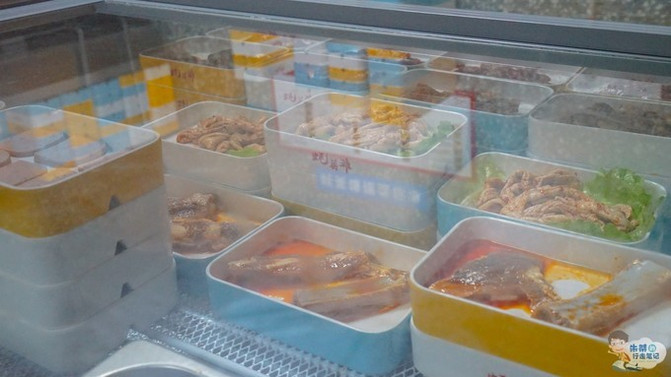
Raw oysters are peeled off on site by dedicated staff and then washed with water. Not only do they look hygienic, but they are also quite hygienic to eat! We just take the processed oysters, then put the peeled oysters into a roasting sheet, sprinkle them with garlic sauce, watch the oyster meat slowly become cooked little by little, listen to the purring sound, turn the oysters over, pour the juice on the surface, wait a few more minutes, and bite down in one bite to be satisfied! There is an unlimited supply of raw oysters in the store. Eat as much as you want until you are full!



In addition to raw oysters, there are also some meats, vegetables, snacks, etc. If you want to eat more authentic ones, you can get pressure cooker seafood. Compared with grilled raw oysters, pressure cooker seafood is more authentic, but I personally still prefer Roasted raw oysters, roasted raw oysters are perfect with garlic mashed. The thick-cut pork belly in the store is also good. If you are afraid of getting bored, you can wrap it with lettuce. However, I went for oysters and didn't eat much other meat.

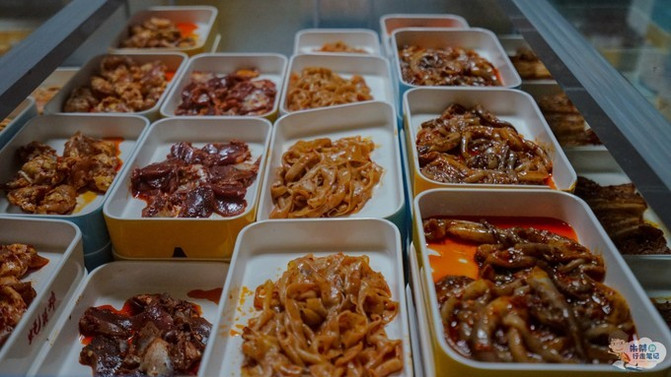

Generally speaking, if you want to eat raw oysters, you must come here to experience it. The raw oysters in the store are so fresh that there is no fishy smell at all. There are also many snacks, such as palm treasures, ice powder, fruits, desserts, wolf tooth potatoes, etc., great value! These are all supplied in unlimited quantities and are stored in different regions, ensuring that the ingredients do not mix with flavor and are also convenient for our diners to find them.


This meal was treated by a local friend. I was worried that the price would be very high and my friend would spend more money. In the end, he said that the per capita meal fee here is less than 100 yuan. For only 88 yuan per person, you can taste the unlimited supply of raw oysters, as well as dozens of other dishes and seafood. Moreover, these are quite "heroic", which can be said to be the most "heroic" self-service barbecue restaurant in Chengdu.



On the fourth day, walking in Chengdu
Jinli Ancient Street
Not long ago, Jinli Ancient Street was listed among the 21 most beautiful streets in the world by CNN. It is not only the only neighborhood in China selected, but also the only two scenic spots in Asia on the list. It is also ranked first on the list.


Maybe it's because one person falls in love with a city, but I fall in love with the excitement and comfort of this city. For Zhao Lei's words in Chengdu,"Walk with me on the streets of Chengdu until all the lights are out and don't stop", I set foot on this Jinli Ancient Street, known as the "Chengdu Version of Qingming Festival Riverside Map". Jinli is located next to Wuhou Temple in Chengdu. It is part of the historical sites of the Three Kingdoms. It is an ancient street that integrates the culture of the Three Kingdoms and the folk culture of western Sichuan. It is also a relatively large-scale ancient street of the Qing Dynasty left over from Chengdu. It is also known as the protected districts of Chengdu's three major historical and cultural cities, together with Wenshu Yuan and Daci Temple.



Jinli Ancient Street is 350 meters long and integrates tourism, shopping, leisure and entertainment. It adopts the architectural style of an ancient Sichuan town from the late Qing Dynasty and the early Republic of China. Although it is a short distance of 350 meters, it condenses the essence of Chengdu life: there are teahouses, inns, restaurants, bars, stage, flavored snacks, handicrafts, and local specialties, allowing you to taste the original Sichuan flavor.




Entering under a plaque of "Jinli", it seems that the busy traffic of the city has disappeared, and replaced by an antique scene. Wannian Terrace is located in it, with green tiles scattered in shape. The green stone road meanders forward. Although the path is narrow, it has the charm of winding paths leading to the secluded world. You can paint everything you can see. On both sides of the street are full of green walls and black tiles. Buildings, finely carved Ming and Qing buildings fly around the corners, and in an instant, it feels like time is traveling backwards. A string of red lanterns hangs high, bringing into full play the oriental flavor.





Jinli is the most beautiful after night. The ancient street under the dim lights presents a different style. In Jinli at night, the good show has just begun. In the blue-tile corridor in the middle section of Yanxi Avenue in Jinli, more than a hundred stone carvings of the Song Dynasty are displayed. Red lanterns are hung under the eaves, and the white walls are mottled with light and shadow. Therefore, this is also a check-in place for many photography enthusiasts. The dark red lanterns reflect the light and reflect gently on the wooden buildings. The pedestrians are bustling along the way, making it more lively than during the day. Stop and stop all the way, blowing the breeze, walking on the blue stone road, and feeling this slow-paced life. Of course, you can also go to the bar on Yulin Road, have a few sips of wine, and tell your story in music like Zhao Lei while you are slightly drunk...



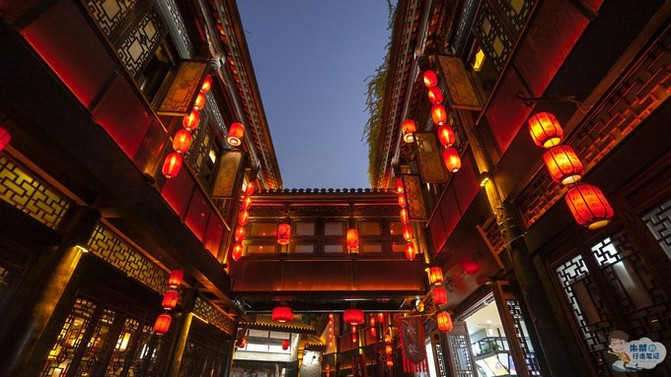
Don't miss the tempting food on both sides of the street, which brings together well-known snacks with very characteristics from Sichuan. The delicacies in the restaurant include beef pot helmets, three cannons, and fat sausage noodles. Each cup and cup are all for the taste. They are not fancy or gimmicks. They are about benefits. There are also craftsman's toys. Making a clay figurine, turning sugar paintings, and buying a paper-cut are all the favorite things in childhood, and also the happy time to miss the innocence of childhood. I believe that anyone who has really been to Chengdu to understand Chengdu, or who has experienced the city of Chengdu, will deeply fall in love with it.




I think that the enduring popularity of the song "Chengdu" not only brings out the beauty of the melody, but also sings the softest place in people's hearts. There is a rare leisure here, and you can feel all the fireworks and joys and sorrows in the world except for desires and pursuits... You can also walk the streets of Chengdu, feel the intoxicating evening breeze, and appreciate the fireworks that represent the world. The night of Chengdu for three thousand years has been lingering.





I accidentally saw a very popular video on the Internet. There was a cute "little white rabbit" on the plate, and someone was beating it with a spoon. It looked very Q. Recently, I happened to be in Chengdu. I checked it and found that there was an Internet celebrity white rabbit pudding at Jiyu Hot Pot Store. I suddenly ended my trip to Jinli Ancient Street Store on a whim and went there. The result was a great surprise. As a customer, the first impression when entering the store was enthusiastic service and an excellent experience.


Because it was night, everyone thought that the restaurant's style would be very general, but when I entered the store, I was deeply attracted by the refreshing decoration style. Green is greatly displayed in the store, and the clean and tidy dining environment makes people's appetite double.


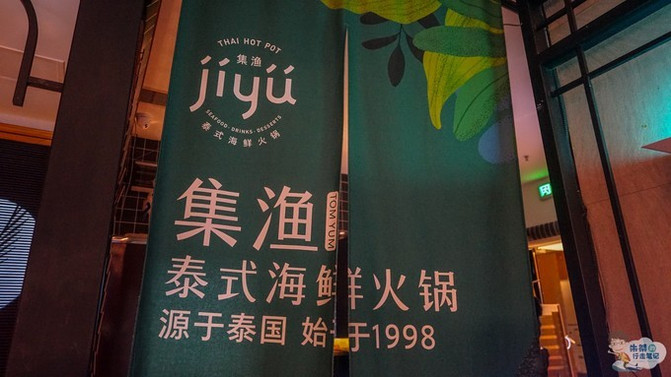
The service in the store is really enthusiastic. The waiter will ask you what you need from time to time. The most important thing is that the waiter will also help peel shrimps. Friends who don't like peeling shrimps but love to eat shrimps must go. The service is amazing.


The location of the store is easy to find by following the navigation. In Tai Koo Li, everyone can order the set meal based on the number of people. The set meal is basically shrimp, abalone, raw oysters, shrimp slips, fat beef, and lunch meat. The snacks in the set meal are all free. There are many varieties, including bunny pudding, various fruits, plum jelly, pineapple fritters, etc., which are not perfunctory at all.


The bottom of their tom yum soup is sour and spicy. It feels like it has been slightly improved and is more suitable for Chinese tastes. I love their seafood the most. It's really super fresh. The signature live shrimp is still moving when it is served. The waiter will help scalm and peel the shrimp shells.


In addition to shrimp, there are also abalone that must be ordered. Six-headed abalone is the most recommended. Fresh abalone is active under the action of lemon juice. After being rinsed with the base of tom yum soup, the meat is tender and tender.
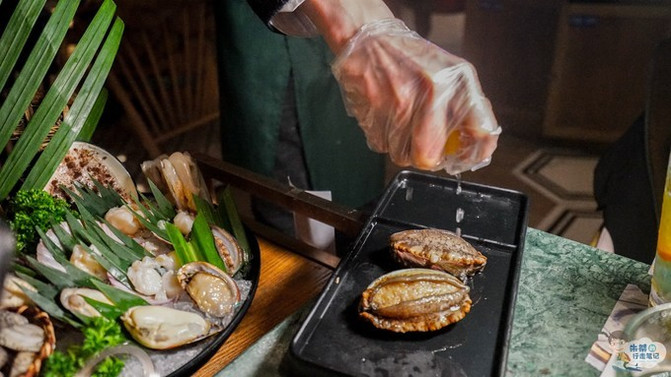

The staple food is seafood fried rice and mango glutinous rice. There is really a lot of seafood in the seafood fried rice, and the ingredients are too abundant. The mangoes on the mango glutinous rice are very fresh, soft, glutinous and sweet.


Desserts after meals must not be missed. The poplar branch nectar cake is definitely full of ingredients and authentic taste. Remove the gift belt that wrapped it, and the poplar branch nectar cakes flow out, revealing the true appearance of Lushan Mountain. Every bite of the cake is wrapped with thick poplar branch nectar. Sweet but not greasy, pure taste. If you don't like sweetness very much, you can choose Jasmine jelly. Jasmine tastes fragrant and takes a sip of Jasmine tea.


Bunny pudding, which is the Q-bomb "little bunny" that attracted me to this store, is fun to pat it yourself, and it is full of milk and melts immediately in the mouth. Plum jelly was appetizing and soothing, so I ate three or four in one go. Super enthusiastic giant baby-style service, authentic taste, unlimited supply of super-conscientious free snacks, and a sudden check-in call for an excellent experience.
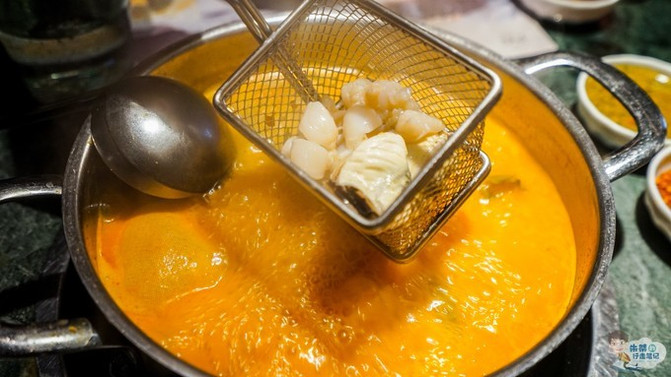

--I am the dividing line of strategies--
stroke
January 12 and 13, 2019 Du Fu Cottage-Jinsha Site Museum
January 12 and 14, 2019, Sichuan Province Museum-Qingyang Palace
Chengdu Museum, January 12 and 15, 2019
Jinli Ancient Street, January 12 and 16, 2019
traffic
aircraft
Chengdu Shuangliu International Airport. It is located in the north of Shuangliu County, Chengdu, 16 kilometers away from the city center.
train
There are a total of three passenger railway stations in Chengdu, namely Chengdu Station (Chengdu North Railway Station), Chengdu East Railway Station, and Chengdu South Railway Station.
bus
There are more than a dozen long-distance passenger stations in Chengdu, which depart in different directions. Among them, the most commonly visited by tourists are Xinnanmen Station (tourist passenger transportation center), Chadianzi Passenger Station and Chengdu Bus Terminal (Wuguiqiao Bus Station)
accommodation
S Hotel Chengdu Taigo Riaduo is located in the center of Chengdu City, in the center of Taigo Li Commercial Street. The hotel is close to Metro Lines 2 and 3, making transportation to Kuanzhai Alley, Tianfu Square, Wuhou Temple and other attractions extremely convenient.


The entire hotel is themed by reading and humanistic photography. High-quality guest room products and facilities and meticulous and warm services allow every visitor to enjoy a healthy lifestyle of "natural, quiet, warm and simple".


author
A semi-literary older male young man who loves life, travel, music, reading and writing. Global travelers, travel video celebrities, Sina Weibo signed up with self-media, major self-media platforms signed up with travel self-media, and ota platform signed up with travel experiencers. Please contact the author for reprinting and respect the original author's efforts.

Previous Article:A glimpse of the light and a taste in three days, the story and taste of Chengdu, the land of abundance
Next Article:Food and life, their common name is Chengdu
